I turn onto the sun-dappled dirt road. The shagbark hickories and red oaks that line the road nod with familiarity. Welcome back friend, they say. I park and my nose can see faster than my eyes and finds more familiarity. A rich, organic smell tinged with sulfur floods my mind with memories. I walk the brief path through the trees and emerge into a sweeping openness of green and home. I stand at the edge and take in marsh. I have returned.
This is my tenth season on this marsh. As I struggle to find an academic position, a friend joked that this may be the only way I get tenure (“ten-year”). I will accept that promotion proudly, a young scientist educated in the open and salty halls of the marsh. I step onto the marsh again for another lesson.
A tossed quadrat. Clipped grass. I am face-to-face with 100 coffee-bean snails that glide over the sediment surface. This is Melampus bidentatus (the snail climbing the grass in the blog header is Melampus). Just as the marsh is an ecosystem that shares qualities with its aquatic and terrestrial cousins, Melampus’s place in the family tree appears transitional. Melampus is a pulmonate snail and just like you and me, breathes air. It has highly vascularized tissues behind its head that act as a primitive lung. Land snails and slugs in your garden breathe the same way, while true marine snails often have gills. And while Melampus lives in a part of the marsh that’s not flooded 96% of the time, it still practices the rituals of its marine ancestors. A week or two before the spring tides flood the high marsh in June, there is a scramble by Melampus, which are not known to scramble, to get eggs laid on the stems of Spartina patens and S. alterniflora. When the water pours over the marsh during a full moon, veliger larvae, which look like tiny coiled snails with Dumbo-like ears, emerge and enter the water column. This air-breathing snail has aquatic larvae. After a few weeks, the larvae settle, the Dumbo-like flaps shrink and the snail becomes a tiny version of the adult. This is Melampus’s marsh.
I start collecting snails. There’s a piercing bite on my hand. A greenhead (a horsefly with big green eyes) has found what little skin I have exposed. With greenheads, as with mosquitoes, it is the female that seeks a blood meal to provide protein for her egg-laying. Males are relegated to nectar and plant juices. So she cuts into my hand with a handsaw-like mandibles and sucks up my blood. She will lay eggs in the high marsh and from those eggs will emerge fat, tough wriggles of larvae that are voracious predators of the high marsh. Isopods and amphipods take note. This is the greenhead’s marsh.
I swat at her and miss. I hope that the dragonflies that dart about the marsh will have better luck in catching her. The dragonflies are early this year, as are the greenheads. Insects aren’t typically thought of as marine invertebrates, but the aquatic naiad larvae in the salty ponds that dot the marsh suggests insects are important in this ecosystem of salt. This is the dragonflies’ marsh. Unless of course, the dragonfly finds itself in the beak of a swooping tree swallow that carries it to its nest. Then this is the marsh of the swallow. And it’s my blood that feeds the swallow. This is my marsh.
In step with swallows, the dragonflies, and the snails, humans bring new and young recruits to the marsh each year. This year we have another crop of bright and eager undergraduate and high-school students that have recruited to the marsh to sink in the mud, fall in the water, and participate in exciting science. Throughout the summer you will hear about the many projects and brilliant science being conducted. Chris Haight has returned for his fourth year and has emerged as a brilliant coordinator of the project and a fearless hauler of fertilizer. We will miss him when he goes to graduate school at Columbia next year. Jimmy Nelson returns for his second year as a post-doc and continues to chase the small, but tenacious, mummichog.
I have returned because ultimately, we all came from the sea. And each year for the past ten, I have been compelled to return home. I have returned because this is my marsh.
Below are some young scientists in action. This is their marsh.
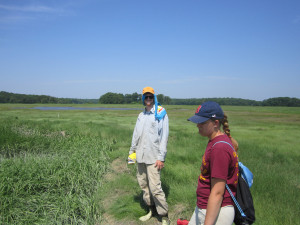
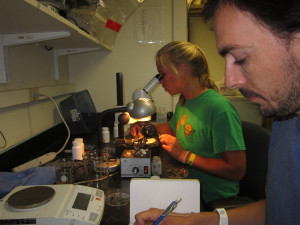
I’m a good lab assistant.
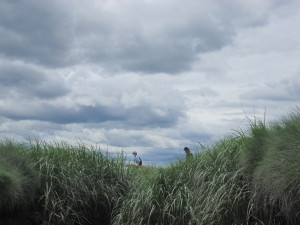
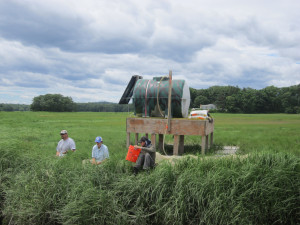
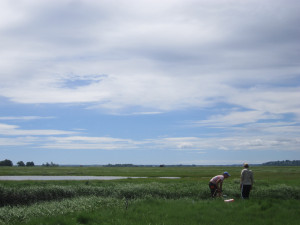
– David
Leave a Reply